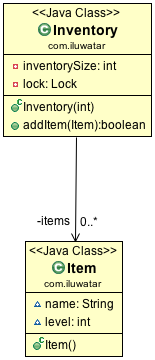* Moves converter pattern to Java 11 * Moves cqrs pattern to Java 11 * Moves dao pattern to Java 11 * Moves data-bus pattern to Java 11 * Moves data-locality pattern to Java 11 * Moves data-mapper pattern to Java 11 * Moves data-transfer-object pattern to Java 11 * Moves decorator pattern to Java 11 * Moves delegation pattern to Java 11 * Moves dependency-injection to Java 11 * Moves dirty-flag to Java 11 * Moves double-buffer to Java 11 * Moves double-checked-locking to Java 11 * Moves double-dispatch to Java 11 * Corrects with changes thats breaking test cases
layout, title, folder, permalink, categories, tags
| layout | title | folder | permalink | categories | tags | |
|---|---|---|---|---|---|---|
| pattern | Double Checked Locking | double-checked-locking | /patterns/double-checked-locking/ | Idiom |
|
Intent
Reduce the overhead of acquiring a lock by first testing the locking criterion (the "lock hint") without actually acquiring the lock. Only if the locking criterion check indicates that locking is required does the actual locking logic proceed.
Class diagram
Applicability
Use the Double Checked Locking pattern when
- there is a concurrent access in object creation, e.g. singleton, where you want to create single instance of the same class and checking if it's null or not maybe not be enough when there are two or more threads that checks if instance is null or not.
- there is a concurrent access on a method where method's behaviour changes according to the some constraints and these constraint change within this method.
